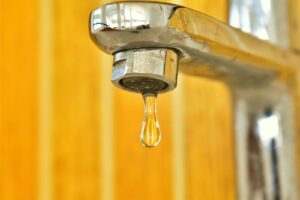Water is essential to life, but how safe is the water coming from your tap? Many homeowners trust the cleanliness of their faucet streams, yet dangers may lurk unseen. Aging systems or industrial waste can taint this vital resource from nature.
Understanding Water Contaminants
Tap water can contain various contaminants. Bacteria, heavy metals, and chemicals may be lurking in it. Lead and arsenic are two big worries, as are pesticides and chlorine leftovers. Despite municipal water plants doing their best to clean the water, they might miss some harmful bits.
Old pipes at home could also add lead into tap water, which is a hidden threat to health and safety. Testing and filtering tap water ensure that everyone’s drink meets standard quality levels, avoiding any unnoticed consumption of unsafe sips.
Testing Your Tap Water
One way to guarantee safe drinking water is to test it regularly. Reports on water quality are usually available from local suppliers, but these do not cover pollutants that slip in through home pipes. Home testing kits can give a quick peek into common impurities; for a comprehensive report, though, professional labs may be required.
Frequent testing becomes even more crucial in homes relying on well-water sources, as these sources are outside the regulatory purview of bodies like the EPA (Environmental Protection Agency). These wells risk contamination due to agricultural waste seepage or natural deposits.
Filtration and Purification Methods
Identifying contaminants is necessary before selecting a suitable filtration system. Carbon filters show effectiveness in removing chlorine, sediment, and volatile organic compounds. Reverse osmosis systems offer more thorough cleaning by getting rid of heavy metals and certain bacteria.
For homes with high levels of contamination concerns, UV purification systems or distillation units provide additional security layers. Homeowners seeking all-around water treatment can also choose whole-house filtration systems; these ensure the household gets cleaner water for drinking, cooking, and even bathing.
Maintaining Safe Water Quality
Ensuring the safety of drinking water requires consistent care. Changing filters regularly, looking after plumbing systems, and keeping track of local water quality reports are key steps in this process.
In areas with recent floods or industrial activity nearby, re-testing is recommended due to potentially rapid changes in conditions. Also, being aware of common impurities in water can prompt proactive measures aimed at safeguarding the health of everyone under the roof.
Being alert to any changes in water quality ensures continuous access to clean, safe drinking water around the clock.
Conclusion
Having safe drinking water is essential for every homeowner. Understanding what might be polluting the tap, testing to confirm water quality, and using proper filtration techniques are vital steps toward ensuring a clean supply of hydration in each household.
Regular upkeep and staying updated on safety measures related to this liquid life source can help protect all those living under one roof from hidden health hazards.





Leave a Reply